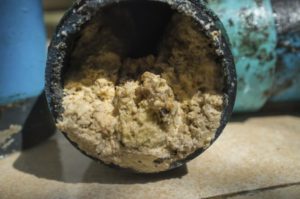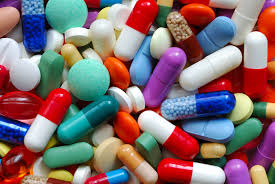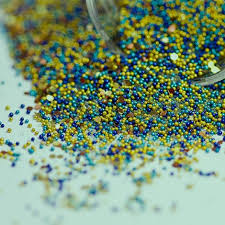Don’t Flush Wipes
View this Power Point Presentation to learn more about “What Not To Flush”
 FOG – Fats, Oil and Grease
FOG – Fats, Oil and Grease
One of the main causes of backups from the sanitary sewer system is due to clogs in the sewer piping system from cooking oil and grease. This material solidifies in the sewer lines and restricts flow, sometimes completely.
Oil and grease enters our collection system most commonly through users pouring used oil down a drain or during the cleaning operations at food service facilities. This not only clogs our sewer lines but can cause sewer to backup into your fixtures and facilities as well. The discharge of fats, oils, and greases to the sanitary sewer system is an important environmental and public health issue. Grease builds up in sewer lines and restricts the capacity of the pipes. Attempts to keep the sewer collection system flowing is a very costly and time consuming effort. Eventually, the pipes can become blocked completely, leading to overflows of raw sewage into streets, storm drains, and our creeks.
The easiest way to solve the grease problem and help prevent overflows of raw sewage is to keep this material out of the sewer system in the first place. There are several ways to do this.Dispose of grease properly: Don’t throw used cooking oil down a sink or toilet. As grease accumulates in the sewer system it can cause blockages. Every time you cook, place the left-over oil in a non-recyclable, plastic container. Cover and store the container in the refrigerator and then throw it out with your regular trash. Never pour grease down sink drains or into toilets. Scrape grease and food scraps from trays, plates, pots, pans, utensils, and grills and cooking surfaces into a can or the trash for disposal (or recycling where available). Do not put grease down garbage disposals. Put baskets/strainers in sink drains to catch food scraps and other solids, and empty the drain baskets/strainers into the trash for disposal. View this Power Point Presentation to learn more about keeping fats, oil and grease out of your drain.
Disposal of Prescription Drugs
Managing unused medications is a safety as well as an environmental concern. Traditionally, we were told to flush unwanted medications down the drain or toilet rather than keeping them around so they would not be misused by the patient for the wrong symptoms or by someone else who was not prescribed the medication and who might use the drugs recreationally. Although effective in removing the medication from potentially being misused, flushing creates a new and growing problem in the environment. Antibiotics and other medications in a septic system can destroy beneficial bacteria necessary for the system to operate.
Wastewater treatment plants are not designed to remove or process many compounds found in medications that end up being discharged into our surface and groundwater. A study by the United States Geological Survey done in 1999 showed that in 80% of the streams sampled contained detectable levels of compounds found in common medications. National attention is growing to develop more appropriate methods of safely disposing of old unwanted medications.
Microbeads
Microbeads are tiny bits of plastic found in exfoliating body washes and facial scrubs. Microbeads are too small to be removed during wastewater treatment, so they can reach streams, creeks and lakes which receive treated wastewater. Since their introduction in 1972, they have made their way into more than 100 personal care products. Microbeads previously found in personal care products have now been banned by the FDA. However, microplastics, found in clothing fibers and the breakdown of plastic pollution over time, are much harder to control/limit. There is little than can be done by the wastewater treatment process we (an many others) currently have in place but any filtration or upgrade in the future to meet other regulations may be able to. View the video below to learn more about microbeads in Lake Winnebago.


